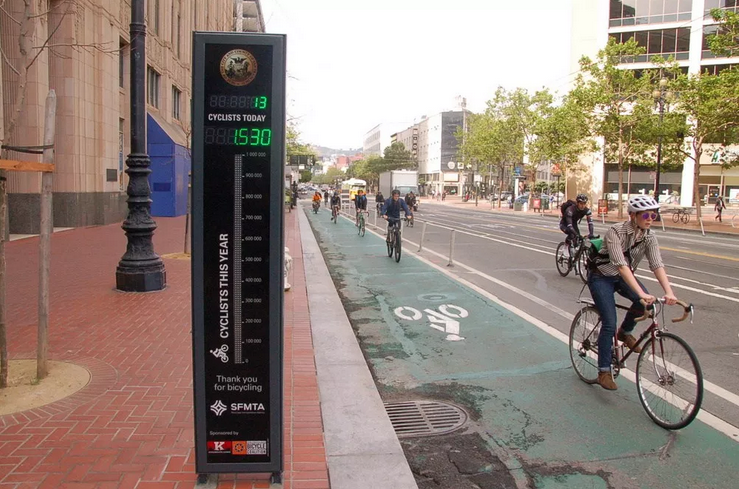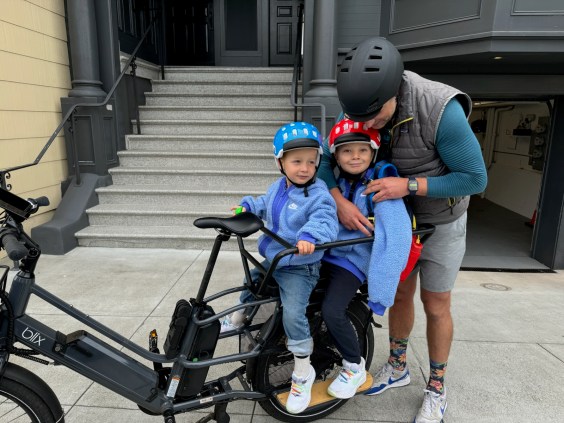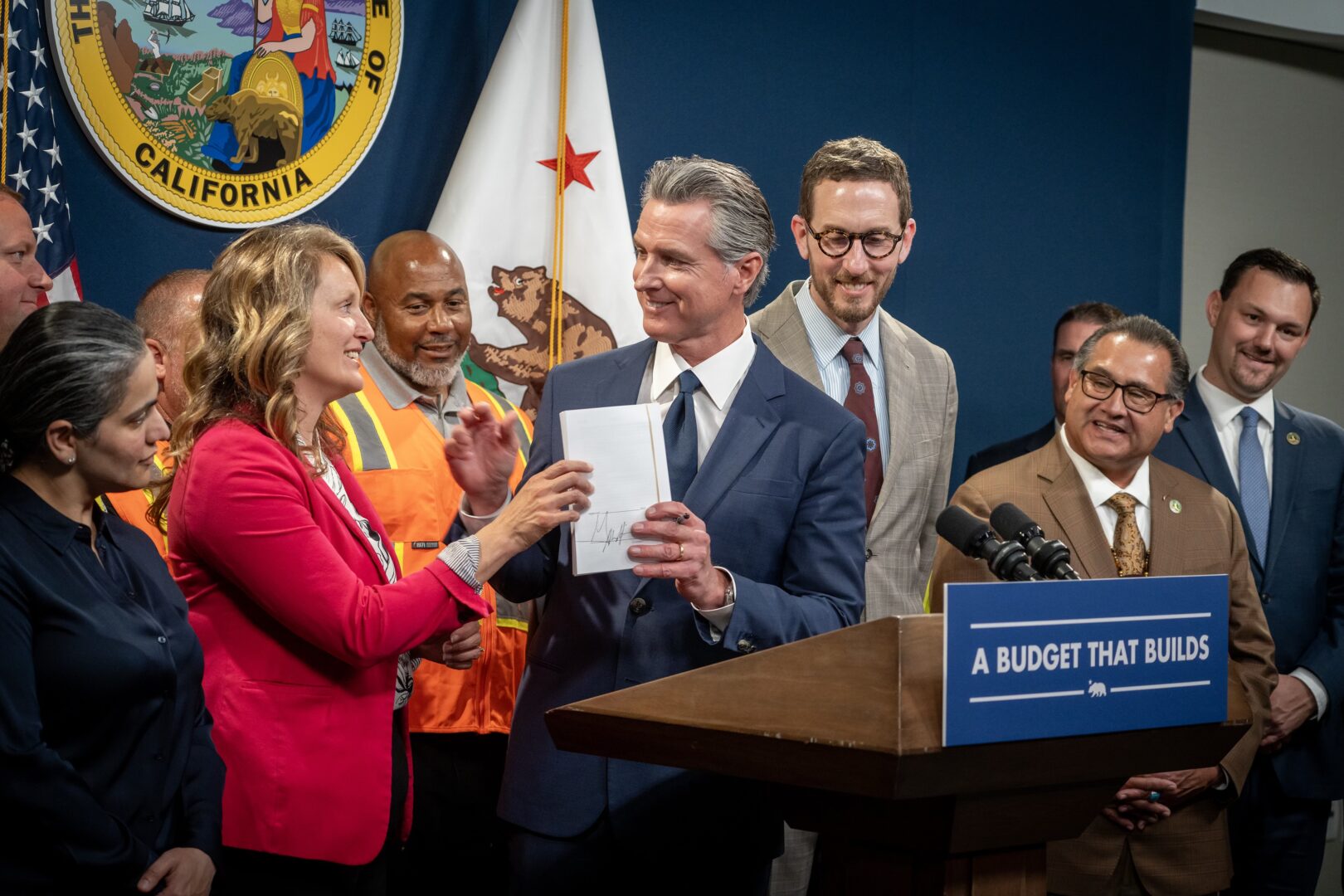Note: GJEL Accident Attorneys regularly sponsors coverage on Streetsblog San Francisco and Streetsblog California. Unless noted in the story, GJEL Accident Attorneys is not consulted for the content or editorial direction of the sponsored content.
The Legislative Analyst's Office, a nonpartisan state office tasked with analyzing government policies, just released its first analysis of the Active Transportation Program. Among its findings are that no definite conclusions can be reached about whether the ATP is meeting its goals.
The report also raises some questions about whether one of the original purposes of the ATP was to build large, potentially transformational projects and, if so, whether its current structure allows that to happen. The LAO report may also be setting the stage for a push to restructure the way funding is currently allocated through the program.
This look at the report is divided into two parts--today's post considers issues the report raises about data. Tomorrow's post will look at some of the report's other recommendations and observations.
ATP Background
The ATP is a key program, and not just because it is one of the main statewide sources of funding for bike and pedestrian projects. Since it was established in 2013 by combining several sources of state and federal money, it has been the subject of intense scrutiny and interest from advocates. They wanted to grow the program, but also to make sure it doesn't become just one more source of funding for business-as-usual transportation infrastructure.
Their input helped shape what should be a model program. The ATP incorporates goals above and beyond simply funding bike and pedestrian infrastructure, although they are all fundamentally related. It has devised a complex scoring rubric to judge whether projects applying for funds match those goals. It uses hundreds of volunteer hours to ensure that the scoring system is applied fairly. It holds numerous workshops every funding cycle to ask all interested parties whether the application process or some other aspect of the program needs to be adjusted. It pays for technical assistance for agencies and groups that lack capacity or access to information needed to successfully apply for funding.
Not even the programs under S.B. 1, the 2017 gas tax hike--which have undergone a somewhat rigorous process to define what projects can qualify--receive as much careful scrutiny as the relatively small ATP.
Nevertheless, the legislature wants proof that the program's investments are producing the desired results in an efficient manner. In last year's budget process, lawmakers directed the LAO to study these questions, and this report is the result.
The goals of the ATP are many--nothing too ambitious, really, just a call to change the world. The ATP is charged with: increasing the number of walking and biking trips; increasing safety and mobility by making walking and biking a safe alternative to driving; reducing greenhouse gas emissions, primarily by convincing people to switch to clean travel modes; enhancing public health; benefiting communities that have historically borne the brunt of pollution and bad health outcomes; and benefiting all different types of people.
They are good goals. They are, perhaps, a lot to ask, but they are the conditions under which the state is willing to put money towards making bicycling and walking more attractive ways to travel.
Part 1: Data
The LAO report concludes that there is not enough data coming in from completed projects to be able to come to "meaningful conclusions" about whether the program does any of the things it set out to do. The authors recommend that the legislature address this by requiring better data from Caltrans and the California Transportation Commission. But why is the data lacking in the first place?
For starters, most ATP projects are still in the planning and construction phases. Although the ATP has awarded funding to 776 projects so far, as of December Caltrans had received only 65 "completion reports" from grantees and 9 "incomplete" reports. Most are from the first funding cycle in 2014.
They were required within six months of project completion, which leaves very little time for any adjustments in travel behavior to take place.
In addition, many of these projects had very little baseline data to start with. Collecting and tracking pedestrian and bicycle data is an expensive and time-consuming process that has not been a priority for many agencies. In contrast, automatic car counts have been done for years. Most intersections with signals have some way of sensing traffic, and the California highway system has an "inductive loops" throughout the state that counts vehicles and measures speeds.
But bicycle and pedestrian counts are still usually done with paper and clipboard and volunteers standing at corners. "Before" data for projects is slim, and individual ATP projects had to do all the necessary data collection as part of the project. Many of the "completion reports" Caltrans has received to date also rely on counts that are inconsistent. For example, planners may have surveyed users before a project was built, but afterward counted bikes or pedestrians; or they may have conducted a count just before construction, perhaps a weekday in the summer--but had to conduct counts in the winter, or on a weekend, to meet their report deadline.
"It's comparing apples to oranges," says Rye Baerg, who manages the Active Transportation Program within SCAG, the Southern California Association of Governments.
Counts have been sporadic and not always methodical in part because, although there has been a requirement to count bike and walk trips, there has not been any accompanying guidance about how to do so. "For autos, we have a lot of sensors in the road; we do regular counting of those, and have a well-defined methodology for doing that," said Baerg. "We're getting there with active transportation, but it will take a few years to get ongoing, good data."
Luckily, the technical advisory committee for the ATP--another group of volunteers working on making the program better--has been working on creating that guidance.
Regions are also beginning to invest in better baseline data. For example, SCAG is exploring ways to make it easier to collect and share count and safety data via a mobile app, according to Baerg. That at least avoids some of the problems associated with using paper and clipboard.
In the long term, it's going to take investment upfront in technology like in-road counters that can collect data 24 hours a day, 365 days a year. Baerg says that some agencies have been investing in permanent counters--in San Bernardino, San Diego, and San Francisco, for example. Those counts can be improved by combining them with data from short-term or temporary counters deployed on other streets to help fill spacial gaps.
"It requires the agency to buy and maintain the counters," said Baerg, "and to have staff to check them--there's vandalism; there are spiders. It takes a lot of thought; you have to set up a program, which means staff and resources. It's not a huge amount of money, but it is an investment."
In the not-too-distant future--five or ten years from now, depending who you talk to--bigger data sets will be available. Caltrans has been working on a pilot project with Streetlight, a company that collects and aggregates travel information from cell phones. The plan is to use the baseline data for Caltrans district Active Transportation Plans, which are just getting underway. Good "before" data will make it easier for ATP projects to more accurately report any mode shifts they see, although there will still be the need to be thoughtful and consistent about it.
Another area where the LAO found data lacking is in relation to safety. In fact, at this time, according to the report, "Caltrans does not report any safety data" and therefore the ATP's goal to "increase safety" cannot be ascertained. This is in part because there is a long lag time on crash data, which relies on police reports which are often hand-written and may contain errors.
Here as well, Caltrans is working to improve baseline information, primarily through its division of Pedestrian and Bicycle Safety. Like the efforts to get better counts data, safety data collection is still in its infancy--well, maybe in its toddlerhood.
Even so, crash data does not give a complete picture of safety, and it does not address other safety factors such as crime or harassment. Data will also be difficult to use as a measure of whether people feel safer, and that perception of safety is recognized as a factor in whether a facility will be well used or not, and whether it can help convince people to bike or walk for some trips.
The LAO report acknowledges that other program goals and benefits are also very difficult to evaluate, such as greenhouse gas reductions and public health outcomes. It calls for the legislature to require better data collection and reporting, and efforts to do so are already underway. But it's also important to keep in mind that even the best data have a complex, imperfect relation to any program's outcomes, including the ATP.
Tomorrow: The LAO report also raises questions about the way funds are allocated through the ATP.






